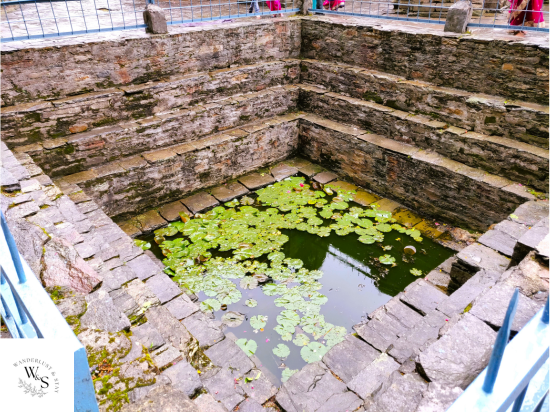During our stay at Binsar Wildlife Sanctuary, we planned a day’s trip to Jageshwar Temple. We had read about the holy place on the internet, and being a travel bug, my anticipation to visit this beautiful place had no bounds. This place is a beautiful blend of history, spirituality, and architectural splendor.
Let me take you on a journey to discover the charm of Jageshwar Dham and why it should be on your travel bucket list.
The Age and History of Jageshwar Dham
Located in the picturesque valley of the Kosi River, Jageshwar Dham is not just a temple complex but a living testament to India’s rich cultural and religious heritage. The origin of the Jageshwar Dham is not very clearly known owing to its remote location in the Kumaon hills. However, the temple is estimated to date back to the 9th–13th century. Presently, the site is protected under Indian laws and managed by the Archaeological Survey of India (ASI). The Archaeological Survey of India (ASI) states the temples are around 2,500 years old and date back to the post-Gupta and pre-medieval eras. Some architectural features date back to the early 7th century, which is before the time of Adi Shankara (c. 788-820 CE). Some theory says that the temples are believed to have been built during the reign of the Katyuri and Chand dynasties, but there is no textual or epigraphical evidence to support or refute these proposals.
No matter when it was built, Jageshwar Dham is one of the most revered sites dedicated to Lord Shiva and is a Hindu pilgrimage place in the Shaivism tradition.
Various legends and myths about this place fascinate me and amplify my curiosity. Some say Lord Shiva meditated and performed his cosmic dance here. Other myths say that Lord Shiva and Sapta Rishis meditated (Tapasya) here. Later, somewhere around the 8th century, Adi Shankaracharya meditated here before leaving for Kedarnath Dham.


Location of the Temple Complex and How to Reach
The temples are located on the banks of the Jata Ganga river in the Almora district of Uttarakhand, at an elevation of 1,870 meters. The area is surrounded by a deodar forest.
We took a cab from Binsar to Jageshwar Dham. The 35 km journey was nothing short of mesmerizing, as the golden sunlight filtered through the trees and the cool mountain breeze brushed across my face. As we approached, the landscape transformed into a green paradise, with the gentle Jataganga river flowing alongside. The air seemed to carry a message of bliss and tranquility, as if nature was preparing us for the sanctity of Jageshwar Dham.
Other Means of Transport
- By Air: The nearest airport to Almora is at Pantnagar. From there, you can book a cab to reach the temple
- By Train: The nearest railway station is at Kathgodam, situated around 130 km away. Kathgodam is connected with all major cities like Delhi, Lucknow, etc.
The Temple Complex: A Spiritual Retreat
The Jageshwar Dham complex is a peaceful retreat, perfect for those seeking solitude, spiritual renewal, or simply an escape into nature. The complex includes around 125 temples and 174 sculptures. The cluster of temples, adorned with intricate stone carvings, stood tall against the backdrop of towering deodar forest that cradles the temple complex. The temples are spread across a large area, with well-maintained pathways that lead you to each sacred site. The temples are built in traditional Nagara-style architecture, characterized by curvilinear spires and ornate sculptures. The temples in the complex include Jagnath Temple, Mrityunjay Temple, Hanuman Temple, Surya Temple, Neel Kanth Temple, Navagrahas Temple, Pushti Mata Temple, Lakulisa Temple, Kedarnath Temple, Navadurga Temple, Batuk Bhairav Temple, and many more that depict ancient culture and design.
The most prominent among them is the Jageshwar Temple—dedicated to the child form of main deity, Lord Shiva, called “Bal Shiva”. The temple’s grandeur, especially the main sanctum with its towering shikhara (spire) against the backdrop of lush deodar trees, left me awe-struck. I couldn’t help but be in awe of the sheer craftsmanship that has survived through the ages.
A Brahma Kund is located in the complex, where one can take a Snana (ritual bath).



Experience That Beckons the Soul
Walking through the temple complex, you can feel the weight of centuries of devotion and spirituality that have shaped this sacred site. Every corner and every stone has a story to tell, and I couldn’t help but marvel at how time seemed to stand still as I stood in the midst of it all.
We offered a small puja with heartful of gratitude at the main temple and also at the smaller temples. The enchanting sound of the Jat Ganga, the hymns and chants echoing in the air, the smell of incense sticks, flowers, and pine trees—everything combined created an atmosphere that made me feel like time had slowed down, and I felt a sense of profound calmness and peace.


As I sat in the temple complex with closed eyes and an open soul, surrounded by centuries of history, spirituality, and natural beauty, I realized that Jageshwar Dham isn’t just a place to visit—it’s a place to experience.
Nearby Places to Visit
You can also visit the following places from the Jageshwar Temple:
- Vridh Jageshwar: This is another temple dedicated to an older form of Lord Shiva, called Vridh Jageshwar. This temple is situated 3 km uphill from the Jageshwar temple complex.
- Jageshwar Museum: The Jageshwar Archaeological Museum houses a lot of ancient carvings for preservation purposes
If you’re planning a trip to Almora or Binsar, I highly recommend taking a day trip to Jageshwar Dham. Trust me, it will be an experience that will stay with you forever.




